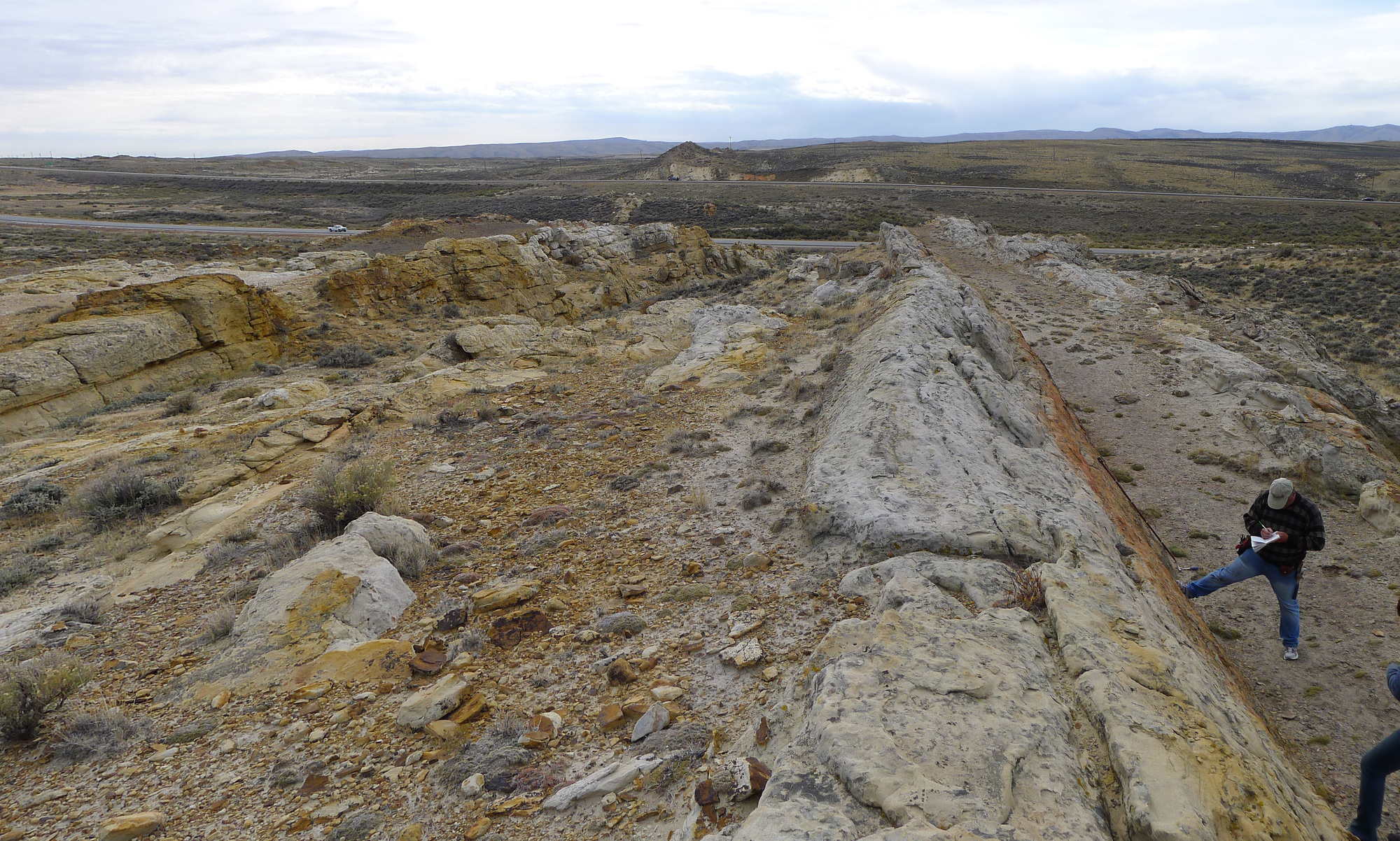NEWS RELEASE: WSGS Publishes Report on Stratigraphy and Hydrocarbon Potential of Formations in South-Central Wyo.
Wyoming State Geological Survey sent this bulletin at 08/10/2016 08:18 AM MDT |
|
Having trouble viewing this email? View it as a Web page. |
August 10, 2016
******FOR IMMEDIATE RELEASE******
Media Contact:
Christina George
(307) 766-2286 x231
christina.george@wyo.gov
WSGS Publishes Report on Stratigraphy and Hydrocarbon Potential of Fort Union
and Lance Formations in South-Central Wyoming
The Wyoming State Geological Survey (WSGS) recently published a study aimed at establishing the hydrocarbon-generation potential of the Lance and Fort Union petroleum systems. The investigation identified which portions of the formations in the Great Divide and Washakie basins had the potential to generate natural gas and form hydrocarbon-bearing reservoirs.
“Wyoming is fortunate to have abundant undeveloped resources, including oil and natural gas. Even though the oil and gas industry and related activity is down for the time being, things will eventually turn around, and these undeveloped resources will be in demand and sought after,” says Tom Drean, WSGS director. “We hope that studies like this will assist future oil and gas exploration and development efforts in Wyoming.”
The Lance and Fort Union formations are complex hydrocarbon systems with elements of both basin-centered and conventional gas accumulations. While there is a great deal of natural gas production in these basins, especially in the Wamsutter area in south-central Wyoming, most production is from the deeper Mesaverde reservoirs.
“Recently, natural gas and condensate have been produced from Fort Union wells in the central Washakie Basin. We wanted to know if this is an isolated occurrence or if there is the potential for natural gas in these formations elsewhere in the basins,” says Dr. Ranie Lynds, WSGS oil, natural gas and carbon dioxide geologist.
Report of Investigations 73, “Stratigraphy and Hydrocarbon Potential of the Fort Union and Lance Formations in the Great Divide and Washakie Basins, South-Central Wyoming,” is the first to precisely define Upper Cretaceous and Paleocene strata (72 million – 56 million years old) in the subsurface of the two basins.
The purpose of the study was to: correlate the stratigraphy of the two formations from the eastern rim of the Washakie Basin throughout the Washakie and Great Divide basins, to use these detailed correlations to constrain the depositional history and basin development during the latest Cretaceous through Paleocene, and to consider the hydrocarbon potential of the two formations and identify locations ideal for generation and accumulation of thermogenic gas.
Stratigraphic correlations, interpreted from 883 oil and gas wells, were used to create a series of cross sections, isopach maps and subsurface structure maps, which, when integrated with age control data, yield a more complete picture of basin development.
Results suggest that the lower parts of both the Lance and Fort Union formations have the greatest potential as natural gas reservoirs, but that gas generation likely occurred only in the deepest parts of the basins below 9,000 to 10,000 feet. Only the lower part of the Lance Formation in the Great Divide Basin reached these depths; the Fort Union was never buried that deeply and is not expected to contain much natural gas. In the Washakie Basin, however, both the Fort Union and Lance formations were buried deep enough to generate gas.
“A lot of data were collected, summarized and synthesized for this project. The data came from public sources, and the summarized versions are publicly available through this publication,” says Lynds. “We hope future geologists will be able to build on this work by refining and expanding the data, and use the results to better interpret the geologic and hydrocarbon-generation history of these basins.”
The 70-page report includes two plates showing west-east and north-south cross sections of the Great Divide and Washakie basins. This was the first of two studies that will be published on the Fort Union Formation in the eastern Greater Green River Basin. The second investigation will center on the potential of coal in the Greater Green River Basin.
The WSGS has developed a publicly accessible online database that will soon be available, the Wyoming Database of Geology (Wyo-DOG), which contains locations, geologic settings and analyses for all samples in this and earlier reports.


